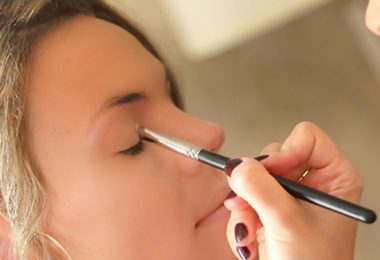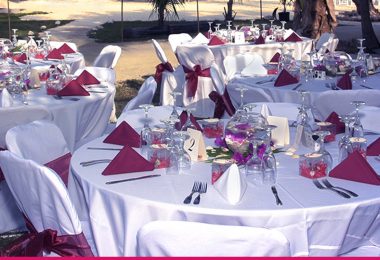
Starting your modeling career? If yes, the best way to do so is preparing yourself well before you set out. Modeling is a rewarding career and quite fascinating too. You will be wearing the latest fashion, traveling to the best places across the world, and meeting people from different walks of life. Modeling also can pave the way to other rewarding careers, such as acting, performing, singing, hosting etc. You could also be the next Miss Words or Universe.
That being said, the road to modeling can be difficult and even more as establishing as a top class model. You have to sacrifice a lot of things on the way, one of them being your lustrous eating habits. You also have to have great knowledge about the art and must have the right attitude and confidence to face the camera, come what may.
If you are up for the challenge, you sure must go through the following steps to become a successful model.
Start with the Basics – Learn the Types of Modeling
There are more numbers of genres in modeling than you can think of. You should be knowing what is what before you start preparing.
Runway Model: Runway models are also known as cat-walk models. They are highly paid, work for top-notch designers, shoot for editorials, and walk on ramps for fashion shows across the world. They are generally fashion models falling under a particular age bar, height and physical statistics to fit in standard outfit size. These models should look youthful and younger. So, the age bar most agencies look for is 16 to 23 years. Modeling is a career, if you start early, the better for you.
Older models are also recruited. However, it totally depends upon the client who is hiring. The typical height for the runway model is 5’9” to 6’. Most women today do not meet the physical statistic requirements. However, you should try to stick to 32” – 36” bust, 22”- 26” waist, and 33” to 35” hips.
Print Models: Print models shoot for magazines, catalogs, editorials. They are also highly paid and highly regarded like runway models. However, they have fewer restrictions in comparison to fashion models, in terms of height, age, and statistics, and that is why it is easier to get into Print Modeling.
Swimsuit/Bikini Model: Lingerie modeling is at times difficult for you need to have a specific measurement. They are hired by the world’s best lingerie brands. The typical requirement for a swimsuit model is 5’7” to 6’ height, 32” to 35” C Cup bust, 22” to 25” waist, and 33” to 35” hips. While the specifications are almost the same for bikini model, they are expected to have a slightly larger bust size.
Other popular and well-paying modeling types include commercial models, product/live models, showroom models, fitness models, bodybuilding models, and niche models, such as tattoo, cosmetic, plus-size, mature etc.
In the beginning, you may not know which genre will be right for you. However,here’s a take on this: if you have a very familiar and girl-next-door look, you will do a great as a commercial and catalog model. You need to be in great shape and have an athletic physique to be a fitness model. Fitness modeling is a major growing area of modeling. For ramp walk modeling, you are required to have sharp features, chiseled look, and very limited facial expressions.
You should prepare yourself for the right type of modeling from an early age. Today, there are several opportunities in the entertainment industry. It is a good idea to practice skills in other areas as well, such as do some acting course, or join a dance class. An acting class or a personality development course will make you comfortable in front of the camera and in communication.
Step 1: Work On Yourself
First, you need to inspect yourself, because let’s admit it, modeling is all about flaunting. You need to look good, feel good, and wear good. Modeling industry today looks for uniquely featured faces, more than the Eurocentric features and symmetrical faces. Right from a gap in between your teeth to big-round eyes, any uniqueness in your looks could be an advantage for you when it comes to being remembered by modeling agencies.
You have to also work on your health to maintain the required body measurements. Join a gym that focuses on cardio, functional training, Pilates and weight training workouts. Fix an appointment with a nutritionist who will be able to replace your normal diet with a healthy and low carb diet.
Moving on, start getting used to seeing yourself in the mirror. Practice emoting in front of the mirror, give different poses, and try new styles and positions every day. You should also practice walking, running, jumping and skipping in heels and stilettoes. You should be prepared for everything.
Step 2: Get Evaluated by a Professional Model Before You Begin
If you have decided to be a supermodel just because your mom and sister think you look like ManushiChillar or just because you are you have been college queen, then you really should take a step back and think if what you have is what modeling agencies are looking for. Therefore, the best way to find out your abilities is to be evaluated by a professional model or agent. This is important before you invest your time and effort into your pursuit.
You can seek help from experts in modeling schools, photography studio, or an acting school. Only if you pass in this test, should you think of creating a modeling portfolio?
Step 3: Build Your Modeling Portfolio
Once you have practiced poses and different looks and have purchased a few nice clothes and shoes, it is time for you to build your portfolio. A portfolio is a series of professionally taken photographs meant for evaluating your skills as a model. It acts as a resume for your modeling career.
First, you need to hire a professional photographer. Then you have to create two types of the portfolio – a traditional portfolio and an online portfolio.
A traditional portfolio is a folder that you will carry along with you on all your casting interviews. It should contain 10 to 12 of your best photographs. You will submit this case along with a brief catalog of your modeling experience.
An online portfolio features in-depth experience of your modeling skill; they present you in more ways to casting agents. Don’t go over the top in building your portfolio. Don’t make it too flaunty or jazzy. It should be classy, professional, and sophisticated.
Step 4: Tips to Make a Portfolio
Start with a head shot. Headshots focus on your head, shoulders, or up until the waist. Use simple makeup and minimal jewelry, and don’t go overboard in styling your hair. A simple bun or hair falling on your shoulders will do. Your headshots should represent your natural self. Remove your facial hair and shape your eyebrows. Avoid using winged eyes, smokey shadows, too much contouring, statement jewelry, and teased hair.
You can smile or look serious, either way, your headshot should bring the best angle of your face.
Apart from your headshot, you will want to add body shots and swimwear shots to your portfolio. Body shots are also simple shots, segmented wardrobe-wise. Again, a quick reminder, your portfolio is not about your fashion choices, it is how you carry yourself in different outfits. So, minimalistic fashion will do the trick here.
Keep it classic, such as include white shirt, tank tops, tailored trousers, skinny jeans, shorts,and casual dresses. Avoid layered skirts, long skirts, jackets, heels, and gents. Use casual dress shoes in place of heels. You can go bare feet too. Get creative. For inspiration, look at other models from your chosen niche.
When shooting swimsuit shots, try to remember that it is part of the work and is a uniform for your career. Don’tuse coy or sultry looks. Berather cheeky, fierce, and playful. For swimsuits, instead of red and black bikinis, go for summer colors.
Don’t forget the Editorial Shots. They are as important as the first three shots. For the editorial photoshoot, you need to find a theme and create a look, or you could join a team who can help you plan a photoshoot.
Next comes Commercial Modeling. This is the hardest part for you have to look casual and not into the camera. In here, you have to sell a product through your photographs. It could be anything, from the finger chips you are having to the sunglass you have worn. The photographs should have a suitable background, should be compelling, and must sell your abilities as a model and the product.
If you have already worked in an ad campaign or have been featured in a publication, you can use them for your tearsheet page. Tearsheets should be neatly cut and laminated before submitting in your hard-copy portfolio. For your online portfolio, you can share the link to the publication.
So, for your portfolio, you will require headshots, body shots, swimwear shots, editorial and commercial works, and tearsheets if any,
Step 5: Start Looking for Work
Now you have everything you need to start your modeling career – looks, portfolio, passion, and minor experience. So, it is time to start looking for work. There are several options for this and it all depends on what you want.
You could add more pictures to your portfolio and create a strong profile for starters. For this, find photographers who are amateur (but great), and who are just getting started with their career. Collaborate with them for TTP (Trade for Print) sessions. It will be a win-win situation. TTP generally means you become their model for their portfolio and they in return give your photos from the shoot for your portfolio. You could use the same collaboration method for dress designers, stylist, and hair and makeup artists.
If you choose to hire a famous photographer, you should be ready to spend a good amount.
Other places of opportunities include:
- Work as a volunteer in event management. Help designers, PR consultants, and local retailers in hosting fashion shows and walk on their runaway.
- Work with a fitness trainer. Indulge in their marketing activities, such as pose for their ads, be their spokesperson, participate in fitness events on behalf of your gym etc. This is important if you aspire to be a fitness model or a body-building model.
- Join yoga and learn different poses or enroll in a dance class and learn different moves. Use the poses and moves to emote and incorporate the same in your modeling
Make sure you give in your hundred percent in this warm-up or preliminary phase. Don’t consider these works insignificant. They will create your foundation so you need to take them seriously, like how you will take a professional contract.
[Also Read: How Much Can You Really Earn As a Model]
Step 6: Start Professional Career
Everyone wants to get into this industry. It is part of a huge industry. The future is bright, but getting through is somewhat difficult. That is why agents are linked to this industry. They act as the HR professional from other industries. They will help you streamline and refine your portfolio, help set up meetings with clients and direct your modeling career towards the right direction.
Social media has made the work of agencies as well as aspirers much easier. Nowadays, agents search through Instagram using specific hashtags and recruit via online. So, make sure you are active on Instagram and other social media platforms to attract these agents. You could also directly walk into their offices or email them on their official website.
Most agencies work on a commission basis. And, they may deduct 10 – 15% of your modeling payment as their commission. If an agent asks more than this share, you should change your agency as earliest as possible.
We have tried to cover everything required to start your journey. However, you should ask experts and seasoned models from your agency for additional tips. If you have query unanswered, please use the comments box below to post it.




